-
The typical high-fire-risk home sold for $550,500 in April, while the typical low-risk home sold for $431,300. That’s the biggest premium since at least 2017.
-
The median sale price of high-risk homes jumped 52% during the pandemic, while the median sale price of low-risk homes rose 41%.
-
High-risk homes sell for more in part because remote work has allowed many Americans to move to suburbs and rural areas, which are often more vulnerable.
-
Homes with high fire risk are also selling faster than low-risk homes, but are more likely to experience price cuts once they’re on the market.
The median sale price of U.S. homes with high fire risk was $550,500 in April, compared with $431,300 for homes with low fire risk. In other words, the typical home with high fire risk sold for $119,200 (27.6%) more than the typical home with low fire risk—the largest premium in dollar terms since at least 2017. By comparison, homes with high fire risk sold for just $56,700 more (18.5%) two years earlier.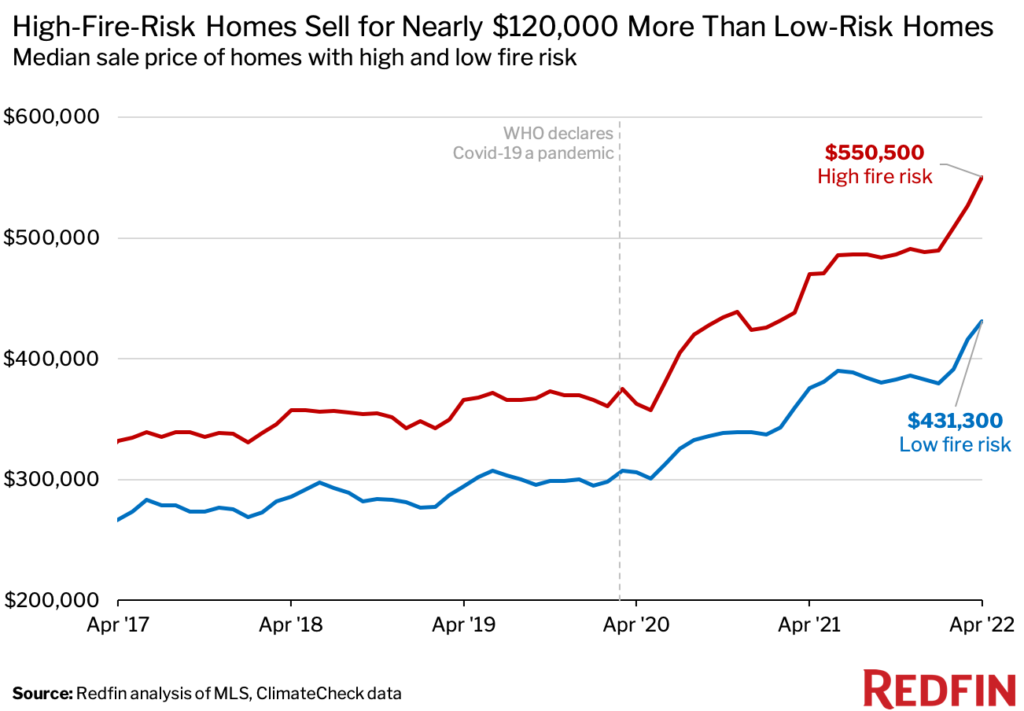
Fire-prone homes have historically fetched higher prices, likely because they tend to be larger and/or located in pricey West Coast metros. The typical high-fire-risk home purchased in April was 2,000 square feet, while the typical low-risk home was just 1,706 square feet. But the price premium for high-risk homes has surged during the pandemic. That’s in part because scores of Americans moved out of cities and into suburbs and rural areas, where homes are more likely to face fire risk due to the proximity to flammable vegetation. The median sale price of high-risk homes was up 51.7% in April from two years earlier, while the median sale price of low-risk homes was up 40.9%.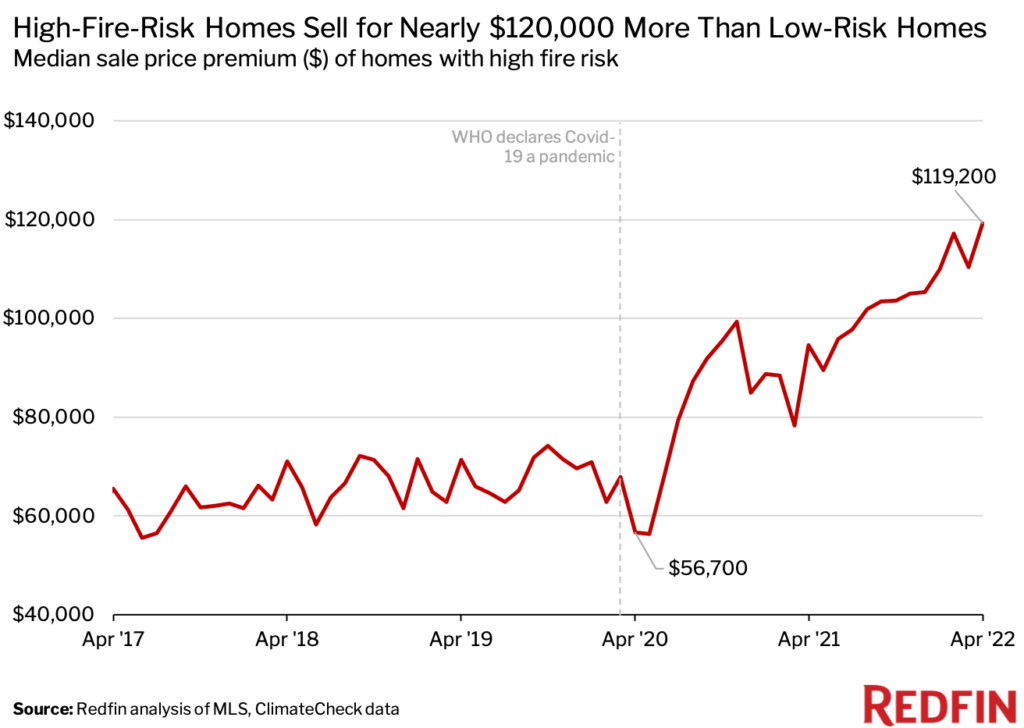
“Suburban homes tend to be more expensive because they’re large, and demand for large homes skyrocketed during the pandemic as Americans sought respite from crowded city life,” said Redfin Senior Economist Sheharyar Bokhari. “Pandemic buyers also hunted for deals due to surging home prices, and while fire-prone homes aren’t cheaper on average, buyers may feel they’re getting more bang for their buck because they’re getting more space. And for some pandemic buyers, the fire-prone home they bought in suburbia was actually cheaper than their last home because they were relocating from somewhere like San Francisco or Seattle.”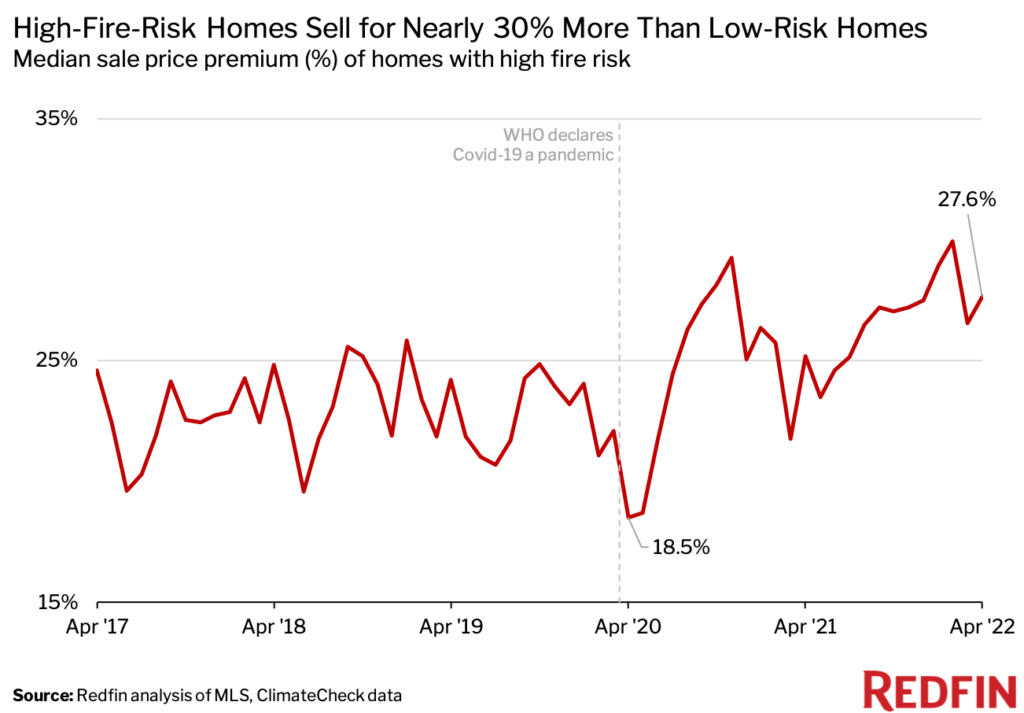
Wildfires in the U.S. have become increasingly catastrophic in recent years. The three most destructive wildfire years, in terms of acreage burned, have all occurred in the last decade, according to the National Interagency Fire Center.
While research has shown that many house hunters are concerned about climate risk when deciding where to live, oftentimes, it’s not a dealbreaker. For some, that’s because factors like relative affordability, home size and proximity to family take precedence. For others, it’s because they’re not aware of the climate risks in the area they’re moving to. Redfin.com now publishes climate-risk data for nearly every U.S. home, with the exception of rentals, to help house hunters make more informed decisions.
“For a lot of pandemic-era homebuyers, what has felt much more urgent than avoiding fire danger is finding a home they can afford at a time when inventory is so low and prices are so high,” said Corey Keach, a Redfin real estate agent in the Boulder, CO area, where the Marshall Fire—the most destructive in the state’s history—destroyed more than 1,000 homes at the end of 2021. “I worked with a young family whose Louisville home burned down in the Marshall Fire. Afterwards, they moved to nearby Superior, where a lot of homes also burned down. They just wanted to get into their next home fast because they had already gone through the painstaking buying process in 2020 and were worried prices were going to skyrocket another 20%.”
Keach continued: “As the market cools and shifts more in buyers’ favor, buyers may start thinking more about climate risk. My advice for house hunters in fire-prone areas is to look at newly built homes, which are more likely to have sprinkler systems and concrete-board siding instead of wood siding.”
Homes With High Fire Risk Also Sell Faster Than Low-Risk Homes
Fire-prone homes not only sell for more; they also get snatched up faster—another indication that evolving homebuyer preferences during the pandemic made high-risk areas seem more attractive to many house hunters. The typical high-risk home sold in 16 days in April, compared with 20 days for the typical low-risk home. That marks a shift from before the pandemic, when low-risk homes typically sold faster.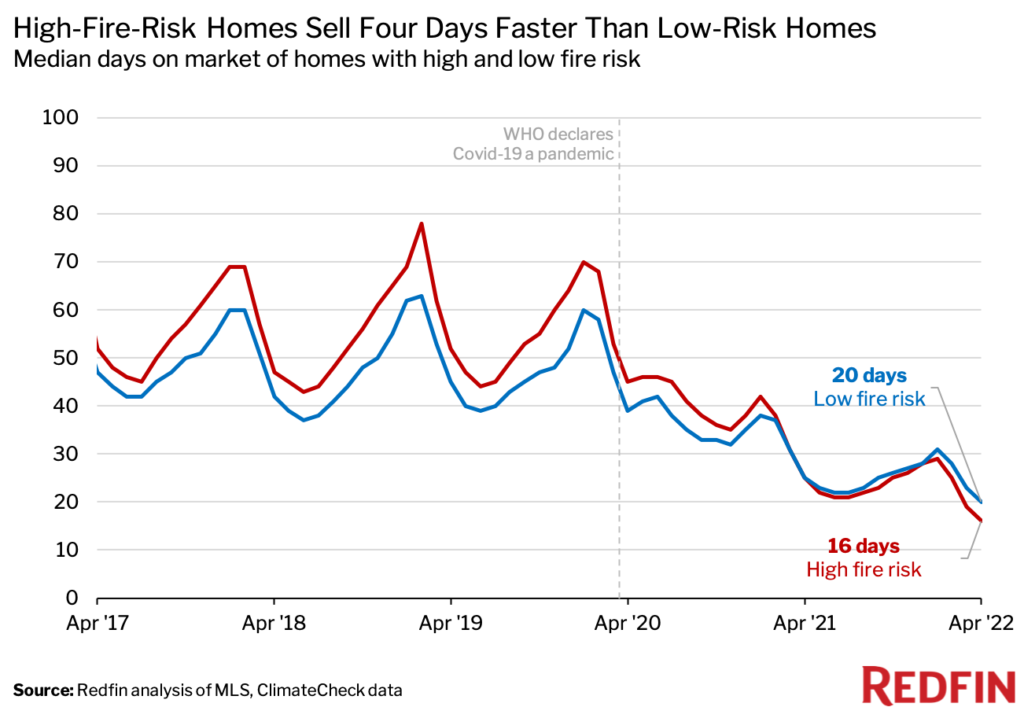
Another gauge of housing-market speed shows a similar trend: Nearly two-thirds (62.4%) of high-fire-risk homes sold within two weeks in April, compared with just 55.1% of low-risk homes. Prior to the pandemic, high- and low-risk homes had about the same likelihood of selling within two weeks.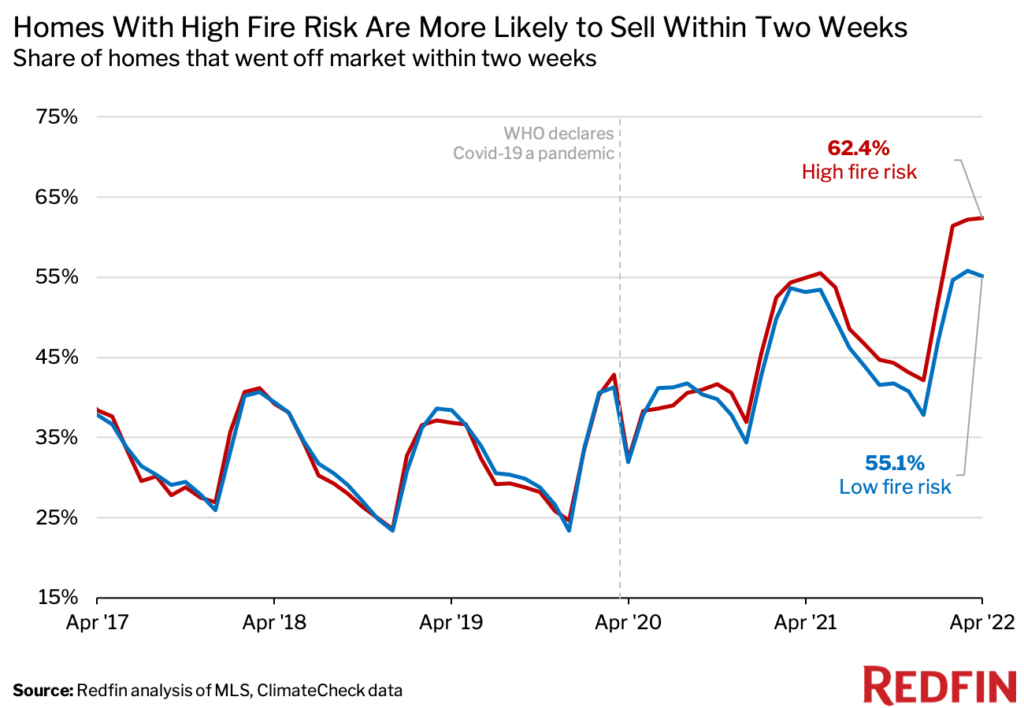
Price Cuts Are More Common For Homes With High Fire Risk
Another interesting shift we’ve observed in recent weeks is that sellers of high-fire-risk homes have become more likely than sellers of low-risk homes to slash their listing prices after putting their homes on the market. In April, 21.9% of high-risk listings had price drops, compared with 18.8% of low-risk listings. That’s only the second month on record (the first was March) during which fire-prone homes were more likely to have price drops.
“As the housing market cools, sellers are more likely to lower their pricing expectations in places where surging homebuyer demand has caused prices to significantly overinflate—places like the fire-prone suburbs Americans flocked to during the pandemic,” Bokhari said.
Price drops have been on the rise in the country as a whole lately as surging mortgage rates have triggered a slowdown in homebuyer demand. Boise, ID and Sacramento, CA, two hotspots for homebuyers relocating from pricey major cities, were among the top five metros where sellers cut their asking prices in April. Both face substantial risk from wildfires.
Methodology
Fire-risk data came from ClimateCheck, which assigns six different fire-risk categories to properties across the U.S.: very low risk, low risk, moderate risk, high risk, very high risk and extreme risk. For the purposes of this report, a high-risk property is one that falls into the high, very high or extreme category, while a low-risk property is one that falls into the very low, low or moderate category. We matched fire-risk data with MLS data in roughly 700 U.S. metro areas, allowing us to report on metrics including home sales and prices by fire risk. The climate-risk data in this report is from March 31, 2021.


 United States
United States Canada
Canada